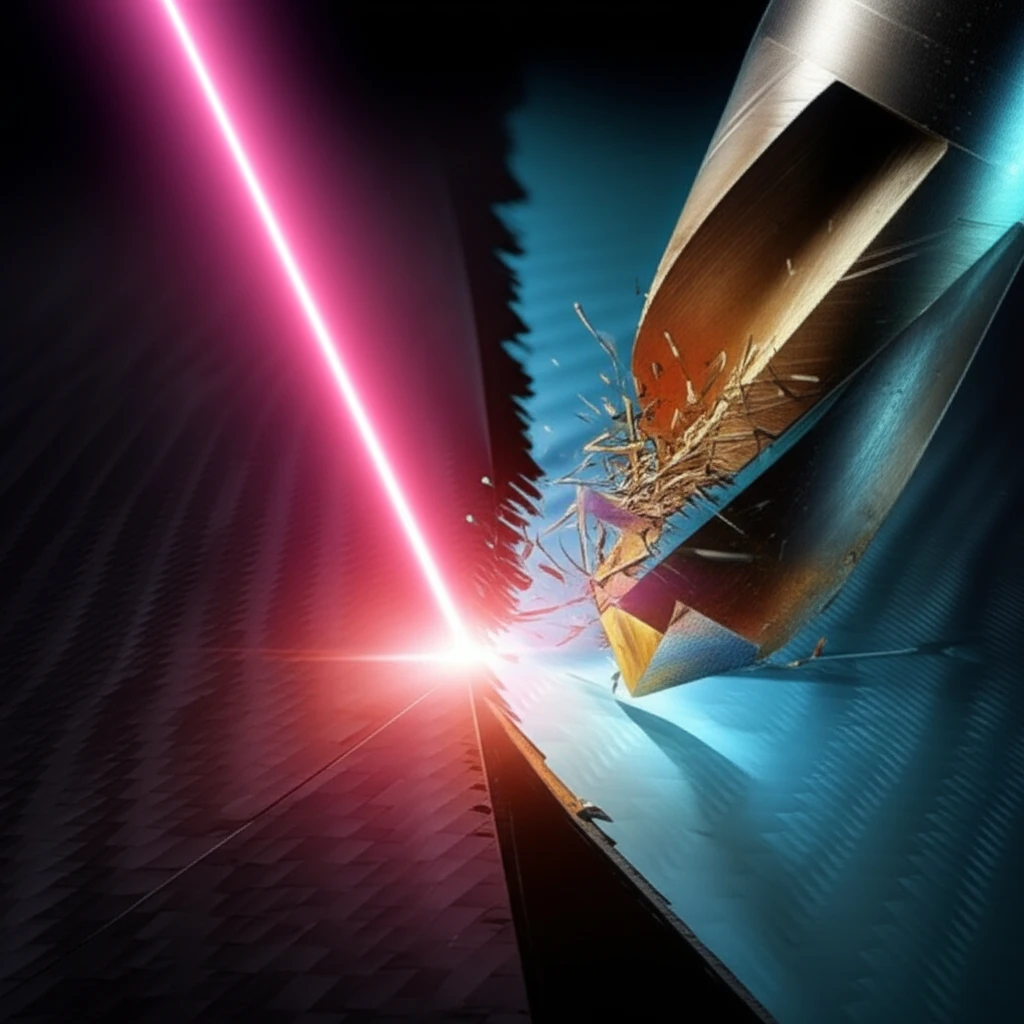
Drilling vs. Laser Cutting: Which Method Makes the Best Holes in Carbon Fiber?
"A detailed look at how drilling and CO2 laser cutting affect the structural integrity of carbon/epoxy laminates."
Carbon fiber reinforced plastics (CFRP) are prized for their exceptional strength-to-weight ratio, making them ideal for everything from race cars to aircraft. A crucial step in manufacturing with CFRP involves creating precise holes for fasteners and connections. Two common methods for achieving this are traditional drilling and laser cutting using CO2 lasers.
However, creating holes in CFRP isn't without its challenges. Both drilling and laser cutting can introduce defects such as delamination (separation of layers) and heat-affected zones, potentially weakening the structure around the hole. This is why understanding the impact of each method and optimizing the cutting parameters is crucial.
This article will explore a study that investigates the effects of drilling and CO2 laser cutting on carbon/epoxy laminates. We'll delve into how each method influences the quality of the holes produced, measured by factors like delamination, cone angle, and stress concentration. Ultimately, we aim to uncover which technique provides the best balance between efficiency and structural integrity.
Drilling vs. Laser Cutting: A Head-to-Head Comparison

The study meticulously compared the hole quality achieved by drilling and CO2 laser cutting, focusing on key indicators of damage. For drilling, the extent of delamination was carefully measured, while for laser cutting, the cone angle (a measure of hole taper) was assessed. Here's a breakdown of the findings:
- Delamination: The study found that the feed rate (how quickly the drill advances) and cutting speed significantly influence delamination. A lower feed rate of 0.01 mm/rev combined with a cutting speed of 10,000 min-1 produced the least amount of damage. Higher feed rates led to increased thrust force and, consequently, more delamination.
The Verdict: Choosing the Right Method for Your Project
The study reveals that both drilling and laser cutting have their trade-offs. While both methods ultimately resulted in similar reductions in force resistance after the process, this study also provided insights that CO2 laser cutting can be useful due to advantages in terms of automation, less tool wear, and less noise pollution during material processing.
Ultimately, the best choice depends on the specific requirements of your project. If minimizing delamination is paramount, drilling with optimized parameters is the way to go. Laser cutting offers advantages in terms of speed and automation but requires careful control of parameters to avoid excessive heat damage.
Further research into advanced laser techniques and drilling strategies could lead to even better outcomes, paving the way for stronger, lighter, and more reliable composite structures.
